The Benefits of Asphalt Crack Repair
Water is one of the worst things to happen to asphalt cracks. Once it trickles into the seams, it can erode the foundation or cause it to freeze. And because of this, the asphalt can heave and become damaged.
Cracks can also accumulate debris, and dirt, and start to grow weeds. Fixing and sealing driveway cracks before they become potholes is the smartest thing to do. It also saves you money by extending the life of your asphalt.
When Is The Best Time To Fix Cracks?
Do you have a section of your pavement that is starting to crack? If you do, you're certainly not alone. Asphalt deterioration often becomes evident after a period of icy or snowy weather.
Thawing can cause also blacktop pavement to crack, crumble, and decay. This is especially true for asphalt that isn't properly sealcoated.
The key to maintaining asphalt blacktop is filling cracks as soon as you see them. Putting off repair work will only lead to more damage and could possibly call for costlier asphalt replacement. And you don't want that.
Why Do Asphalt Cracks Form?
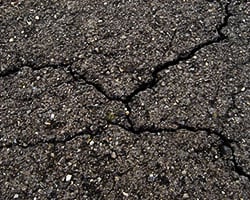 Cracks can be caused by a poor foundation, by not having a thick enough layer of asphalt, or having a layer of asphalt that is too thick.
Cracks can be caused by a poor foundation, by not having a thick enough layer of asphalt, or having a layer of asphalt that is too thick.
Sometimes when the asphalt is originally installed, the asphalt mix is not blended properly. Extremely heavy vehicles and tree roots are some of the factors that lead to the formation of asphalt cracks. Asphalt also tend to expand and contract during the freeze-thaw cycle.
That is why it is important to repair any cracks that form, as well as maintain an ongoing asphalt crack repair program every year. Weeds can also grow in cracks, and these seemingly innocuous plants can cause even more damage.
Preparing for Crack Filling
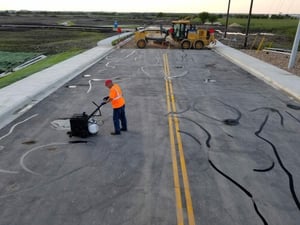 Surface prep is the most time-consuming yet crucial part of the job, but it's also easy to do for any DIYer. Any debris or weeds that are left in the crack will degrade your crack repair job. So to get the longest-lasting repair, the crack seal needs a clean and solid area to stick to.
Surface prep is the most time-consuming yet crucial part of the job, but it's also easy to do for any DIYer. Any debris or weeds that are left in the crack will degrade your crack repair job. So to get the longest-lasting repair, the crack seal needs a clean and solid area to stick to.
A pro would use specialized asphalt crack filler machine like a heat lance, but you can get the work done with simple tools you likely have in your tool box.
Do you need to pressure wash the asphalt before asphalt crack repair? The answer is no, pressure washing the asphalt is not required at all.
Before starting your crack repair, check the weather to make sure there is no rain for several days and the temperature is over 60 degrees Fahrenheit.
This lets the crack fill to cure properly and prevents the damage from spreading.
Clean the Surface Prior to the Actual Asphalt Crack Repair
If you have weed or grass growing in your asphalt cracks, pull them out all the way down to the roots. If you can't pull the roots out, you can use a bit of vinegar to kill them.
Use a chisel or screwdriver to scrape out any loose rocks, debris, or leftover vegetation from the cracks. Then use a wire brush or hard-bristled broom to sweep out any dust.
You can also use a walk-behind gas blower or a backpack blower to speed things up. Professionals can use a crack cleaning machine that's specifically made to rout out the crack.
Make Sure the Surface is Dry
The success of a crack repair job depends on having a dry, solid area. That means you can't use a pressure washer to clean up the cracks, as the water will take too long to dry.
If you do use a pressure washer, we recommend that you dry the area with an air compressor. You can also use a hair dryer if the crack is small enough.
Determine the Size of the Cracks
While you're cleaning the cracks, make a note of how wide and deep the fissures are. Basically, you want to divide the pavement cracks into three groups: shallow cracks, larger ruptures, and alligator cracks.
This is important because they are repaired in different ways. Keep an eye out for surface-spidering damage on the pavement. That's a sign of a dry, brittle surface, telling you it's time to apply a sealcoat.
- Shallow cracks are cracks that are about a 1/2 inch deep or less. With shallow asphalt cracks, you don't need to get a ruler out to measure the depth. If you check your asphalt frequently and you have just noticed some cracking, the depth is likely to be shallow.
- Deep cracks are over a half-inch deep. You should fill deep cracks with sand until they reach a half-inch depth prior to the actual crack filling itself.
- Alligator cracks are multiple cracks that connect to each other and look like the scaly back of an alligator.
DIY Crack Repair
Filling Cracks Less Than 1/2" Wide
Filling asphalt cracks this small is easy. Cold pour crack filler is easy to apply and is perfect for homeowners.
You can use a caulking gun as your asphalt crack repair equipment (or simply pour a little bit at a time on the crack) and a u-shaped squeegee. Apply the sealer and fill the entire crack, then squeegee, and allow the crack seal to dry.
This type of crack filler is NOT recommended for larger cracks. Cold pour crack fill has a tendency to sink into the wider cracks and sometimes pour right through to the foundation, preventing the crack from ever being filled.
Though the crack filler has sealed the crack, it looks as though it has sunk deep into the crack and the surface is not even at all.
Filling Cracks More Than A Half-Inch Wide
This type of repair is more challenging, simply because it needs rubberized hot pour crack filler. If you're a homeowner, you'll need to hire a pro who has proper asphalt crack repair machine to heat and apply the filler. You can also invest in the equipment so you can do it yourself.
The first step in the process is melting the rubberized crack filler in the specialized crack filling machine. Fill the cracks once the crack fill is melted, making sure to fill all the crevices and corners.
Slightly overfill the crack and tamp down firmly with an oiled piece of plywood. Allow the crack seal to cure and dry.
Note: Hot pour is best for damage that is two inches wide or less. Anything wider is considered a pothole, which needs an asphalt patch.
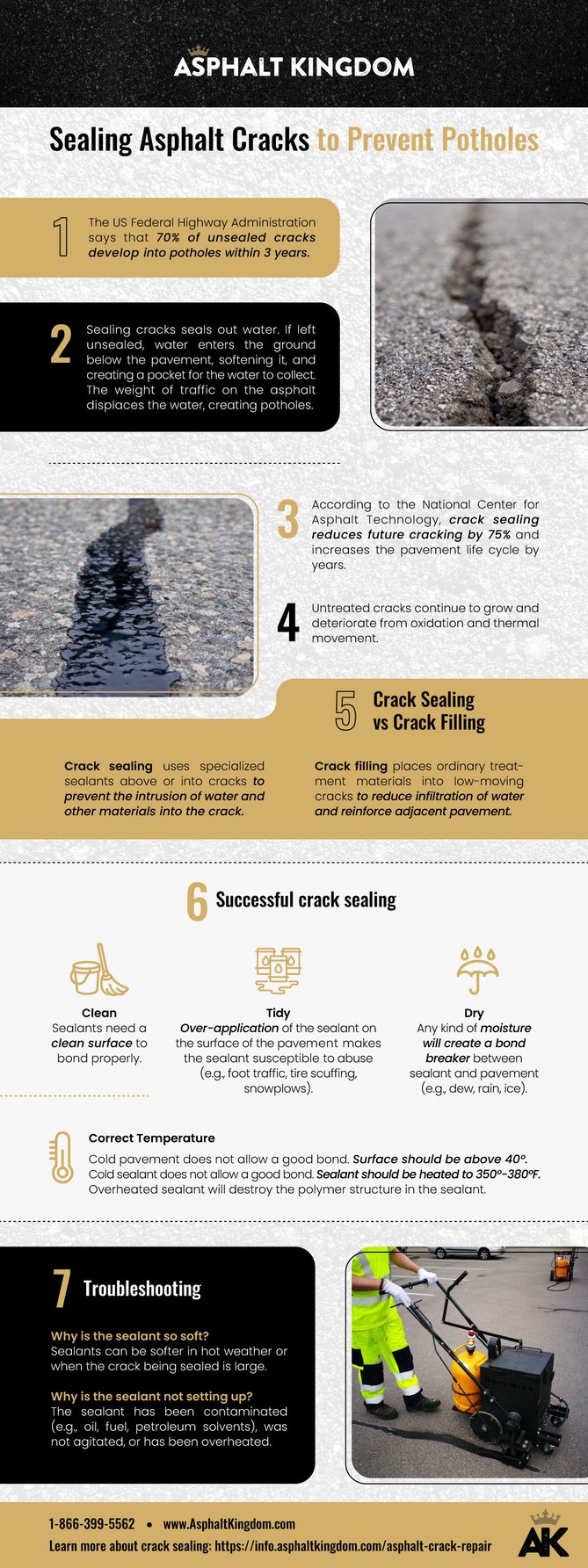
DIY Alligator Crack Repair
Alligator cracks are fairly easy to repair with Gator Patch and a squeegee. But you will need the temperature to be at least 50°F for the patch to cure, so make it a habit to check the forecast before repairing the crack.
To repair the crack, simply pour out a bit of the Gator Patch and spread it with the squeegee into a layer as thin as possible, while filling the crack from various angles. Let this dry completely and then apply a second thin layer.

Learn To Patch Asphalt In A Few Easy Steps
Patching potholes that form on your asphalt driveway is a simple repair process that anyone can do. At present, there are asphalt patching products that have made driveway repair jobs easier and much cheaper to do by ordinary homeowners, even those who are not normally into DIY home improvement projects.
One of these products is the Cold Asphalt Patch, a cold pothole filler that has simplified pothole repair into three easy steps. Are you ready? Let's get started.
The first step is to remove any soil, debris, or loose asphalt pieces found inside the pothole. If the pothole has loose or crumbling edges, smoothen those out with a chisel until the edge is solid.
Making sure that the pothole is clean will ensure that the repair job will last and that the pothole won't reappear after a few months.
Next, pour some Asphalt Patch into the pothole and compact it with a tamping post or a shovel. This action will pack in the patching product tightly in the hole and remove air pockets.
You can now fill up the pothole with the asphalt patch all the way to the top until a small mound has formed.
The third step when you patch asphalt with this product is to do a final tamping. You can use the tamping post or even your car to do this. Drive your car back and forth over the mound until it is level with the ground.
The simplicity of the repairs when done with this product compared to traditional hot asphalt may make you think that the results might be not as permanent.
On the contrary, repairing asphalt using the cold asphalt patch will give you the same results.
This product is basically hot asphalt that has been cooled down. Thus, when you patch asphalt with this product, it will bond with your asphalt driveway because they are made of similar materials.
The Benefits of Using Cold Asphalt Patch
Applying cold asphalt patch simplifies the whole crack repair process. It is also cheaper, because you don’t have to buy equipment to melt asphalt and apply it.
Besides, investing in an AK10 asphalt crack filling machine is not cost-effective for homeowners, as the equipment won’t be used often.
And since you are not using hot asphalt, this makes the repair process safer as well. You will not get exposed to fumes and hot temperatures when you patch asphalt potholes with this product.
With hot asphalt, you need to make sure that the ground is very dry, which means that you have to wait for a few days if it has been raining for the past couple of days.
In contrast, cold asphalt patch can be applied even when the pothole has some water in it.
The traditional way of using hot asphalt also requires the driveway to be closed off to traffic for a few hours while waiting for the asphalt to dry up.
This inconvenience is completely gone with the cold asphalt patch. When you patch asphalt with this product, it sets inside the pothole quickly and can be as hard as a rock in just three hours.
Pro Tip For Contractors: When you have a high ridge on your hot crack fill, use your torch to blend the edges for a better, more even look. Make sure not to go overboard with the heat. Use a low flame to glaze the edges down.
Use coarse sand to pre-fill the cracks so the crack fill will fill them in one pass. If you don’t, you will end up having to go over cracks many times for deep cracks to fill correctly.When you price your jobs, break out the crack fill, and make it optional so the sealing job is in line with your competitors, who may not have priced it in their quotes. This also protects you from the client saying they thought your quote included crack fill.
Submitted by Todd Phillips
Check out how simple it is to seal cracks with the RY10 PRO and hot pour crack sealer:

Learn More: Enroll In Our Free Course
Pavement Asset Management Course
Register Now
This free asphalt driveways course is everything a property owner needs to know about asphalt maintenance and repair.
Tips for Pros
Top with Sand
Top the repaired line with sand. You can apply sand by hand or use a sand dispenser.
Sand makes the crack filler ready for walking on much earlier than if you don't put sand on it. On hot summer days, the rubber filler won't become too sticky if it has sand on it.
Sand on top of your crack repair adds durability to the surface of the crack fill, making it more resistant to wear and tear.
It also helps to create a bond between sealcoating or asphalt sealer and the asphalt surface, so the crack filler doesn't repel the sealer.
Let the Area Cure Properly
Now that the crack filler is in, let it cure for 24 to 48 hours before driving over it.
If you have any potholes, now is the time to repair those, too. It’s a lot easier to fill them now than it used to be. We’re pleased to offer our new Asphalt Kingdom Cold Asphalt Patch that is so easy to use and apply that the owner of our company actually fills potholes while wearing a suit! This rapid-setting cold patch works in any season and takes three easy steps from start to finish.
You can now seal the asphalt to lock your crack repair under a protective layer.
Wondering what steps you need to take to do asphalt driveway repair yourself? It's easy as can be! Follow our quick guide at the link below, and you'll be ready to seal up your driveway before temperatures start to drop.
Read the Asphalt Driveway Repair Guide
Sealcoating and Parking Lot Striping
Timing
If you're working on a property that requires line striping, sealcoating may cover your lines. Wait at least 12 to 24 hours for water-based paint, and 48 to 72 hours for oil-based paint, before painting the parking lot lines.
What's with the time window? If you're confused about why the timing isn't precise, sunshine has a dramatic effect on how fast your asphalt treatments will cure.
With care and timing, you'll know when to start the pavement sealcoating after the crack and pothole repair, and how long to wait before starting the parking lot striping.
Remember that in pavement repair, timing is everything for professional-looking, long-lasting results.
Sealcoating
Sealcoating should be regularly applied every two to three years. For best results, use only a professional-grade sealer that provides optimal rejuvenation and protection.
Asphalt Kingdom’s asphalt emulsion sealer is perfect for the weekend “do-it-yourselfer,” because it is extremely fast-drying and easy to use.
A five-gallon drum of our sealer will cover up to 300 square feet of asphalt. This essential blacktop-resurfacing product can be applied with a sealer brush, squeegee, or one of our spray systems.
Larger quantities — such as the 55-gallon drum and 275-gallon tote — are better suited for parking lots, airports, and other large areas of asphalt. Our supply calculator will let you know exactly how much product you need.
Line Striping
If you have a parking lot with a sealed surface, then you need parking lines. After crack repair and sealcoating, your parking lot's lines will be under a layer or two of black sealer.
You need to refresh your lines with new paint. A small parking lot can benefit from a small linestriper that uses aerosol cans, while larger parking lots can get sharp parking lines from a Titan PowrLiner or a Newstripe Line Striping Machine.
Our free property owner course teaches you everything about maintaining parking lots.
Add Asphalt Crack Repair to Your Business
 Whether you're a professional sealcoat company, a property or estate owner, or landscaper, you could benefit from adding a new service to your business to increase profits.
Whether you're a professional sealcoat company, a property or estate owner, or landscaper, you could benefit from adding a new service to your business to increase profits.
Having both portable crack filling machine and asphalt sealing available from one contractor means less hassle for your customers. They'll be more likely to do business with a company that makes it easy for them to get everything they need done at once. In the long term, it saves them time and money, and we're all looking to save both of those!
Shop Related Products
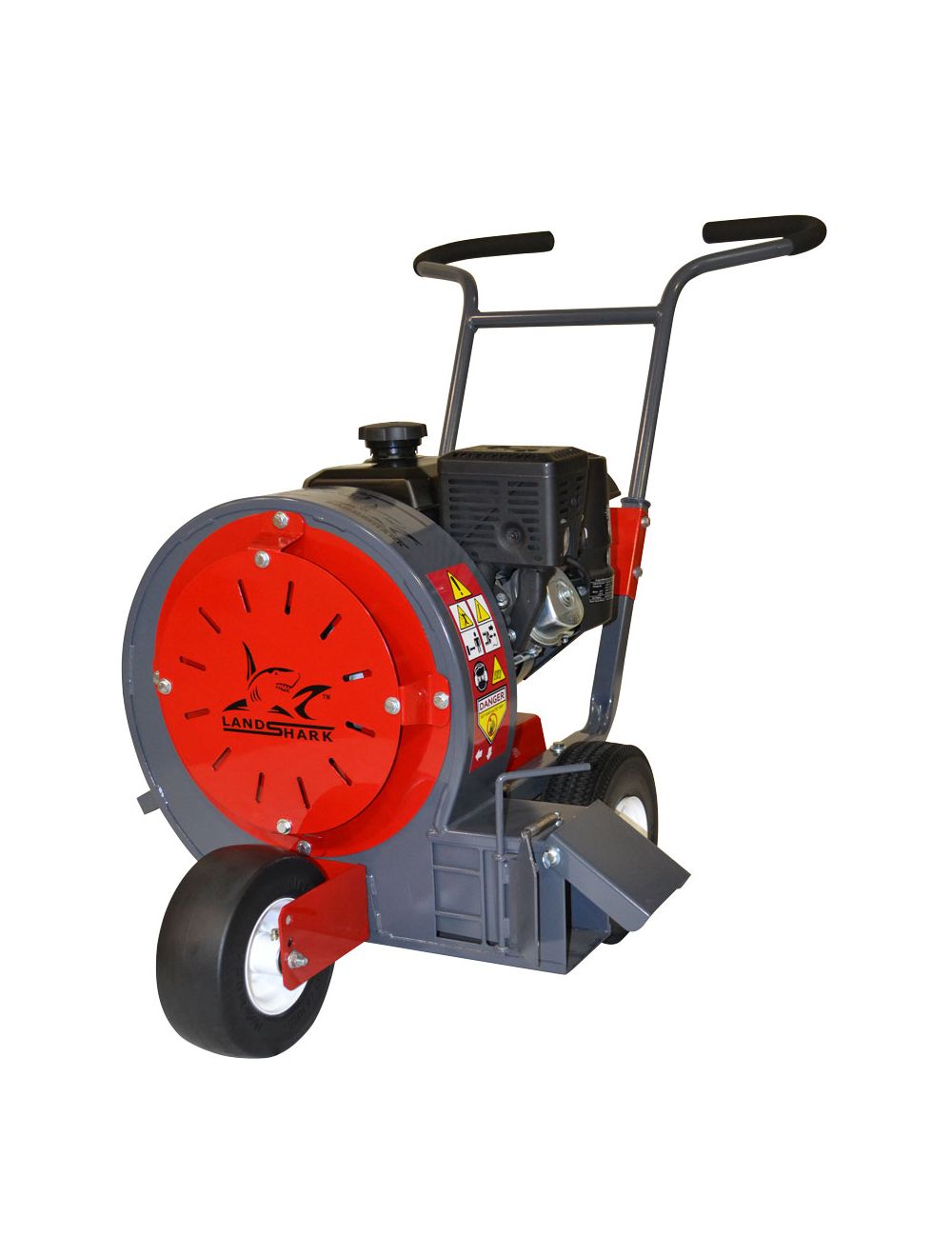
Walk Behind Leaf Blower
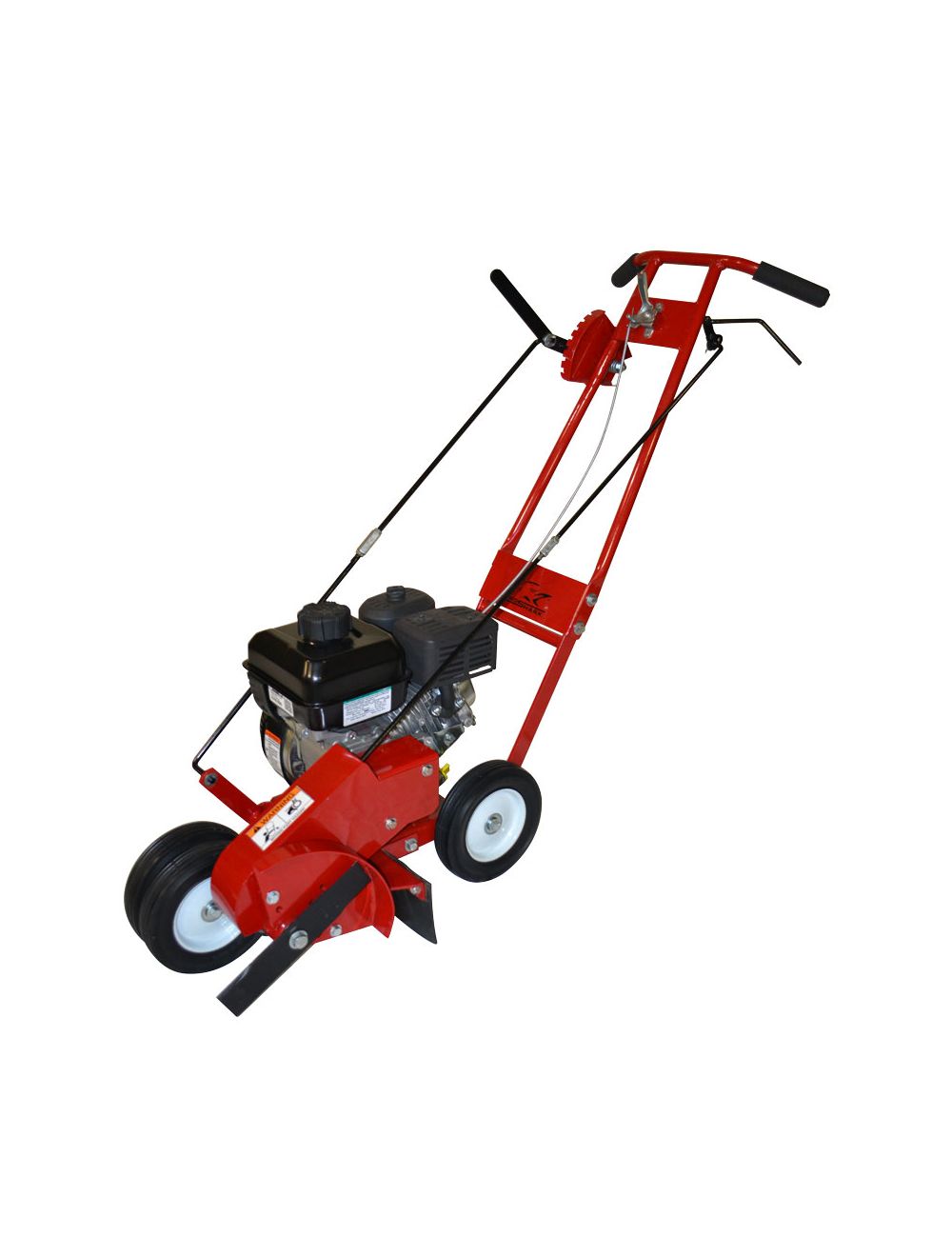
Sidewalk Edger

Crack Seal Melter & Applicator
Advice That You Can Trust
Asphalt Kingdom is not new to asphalt crack repair!
We've worked with thousands of clients including international airports, school districts, hotels, restaurants, contractors and so many more that needed help with their asphalt crack repair. Trust us, we can help you no matter how unique your situation is.
You're definitely in the right place if you're looking for advice regarding asphalt crack repair. Whether you're looking for asphalt crack repair equipment or asphalt crackfiller, we will guide you so that you get your job done the right way and within your budget.
And remember to take advantage of our free online courses on Home Asphalt Repair & Commercial Property Asphalt Repair. Give us a call at 1-866-399-5562 for free expert advice.


